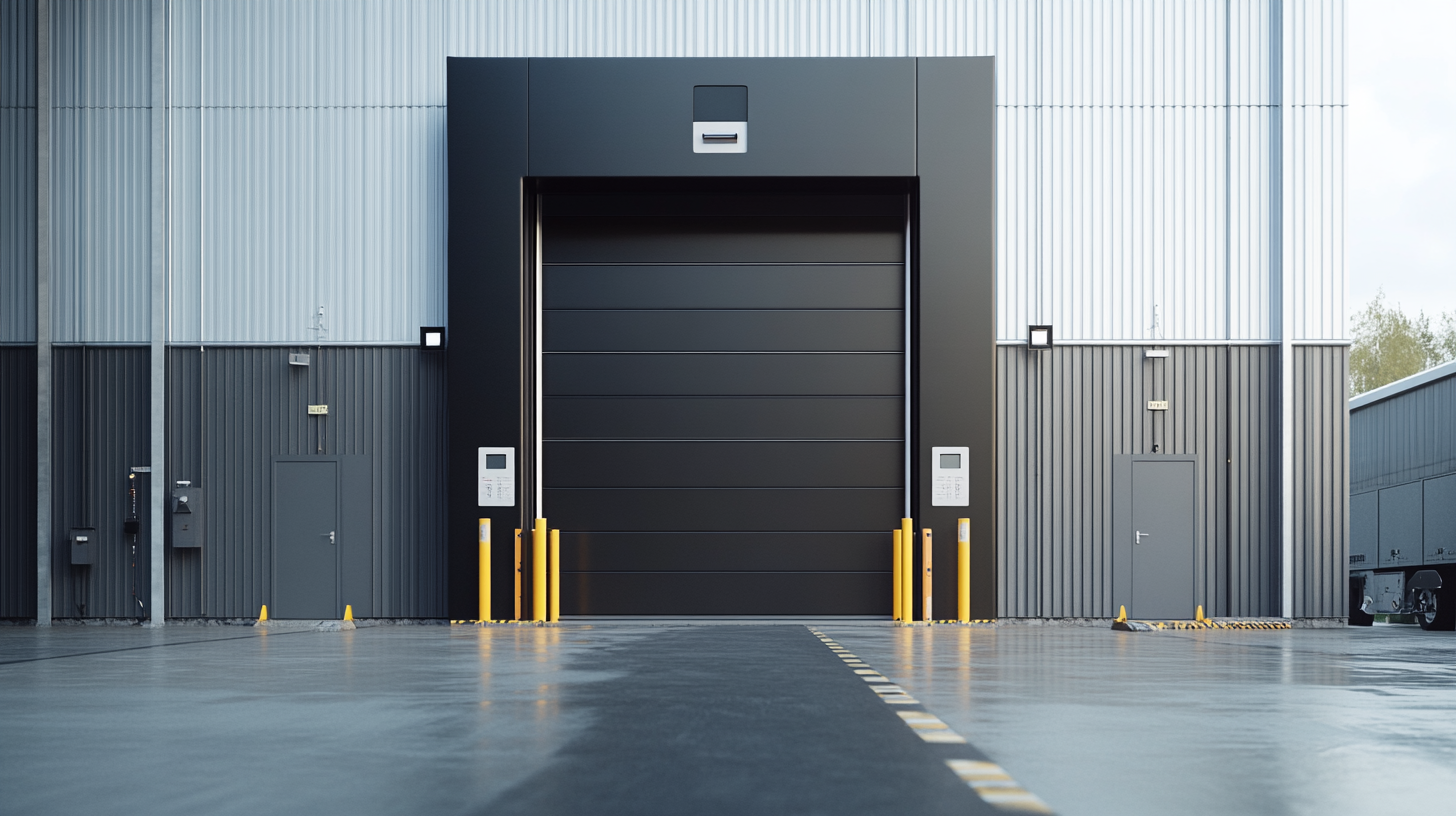Understanding the Technical Specifications of Door Assembly Machines for Optimal Procurement Decisions
Selecting the right facility equipment stands important in the fast-changing world of manufacturing. The door assembly machine, which affects operational efficiency and product quality in the production line, cannot be overlooked. According to a recent Global Market Insights report, the door manufacturing market is poised to amount to $108 billion by the year 2026, as a result of rising demand for energy efficiency and aesthetically pleasing openings in both residential and commercial applications. To comply with market demand and regulatory requirements now and in the near future, manufacturers have to streamline their processes, which makes investment in modern door assembly machines an absolute necessity.
Besides, as user-friendly automated design and technical integration are more and more emphasized, newer designs and configurations for door assembly machines will commence. Freedonia Group states that automation demand in building construction and manufacturing will rise to over $20 billion by the year 2025, thus revealing a deep shift toward more modern production techniques. At the procurement end, having good knowledge of the technical features and operating capacities of any door assembly machine becomes instrumental in decision-making, which would then translate into massive cost savings and productivity gains. This blog intends to shed light on the relevant technical specifications of door assembly machines to make available informed decisions to manufacturers that complement their strategic objectives.

Key Technical Specifications to Consider When Evaluating Door Assembly Machines
Selection of an industrial door assembly machine usually involves technical specification key points. Above all, capacity production defines a machine as being able to produce a certain number of doors hourly. Currently the market of global door assembly machine industry is experiencing meaningful growth with compound annual growth rate (CAGR) of 5.3% for the period between 2021 and 2026 by increasing demand for efficiency across production lines, as stated in the report by MarketsandMarkets. It helps manufacturers in the determination of how well the machine meets their production goals regarding the maximum throughput a machine can achieve. Another very important specification is machine automation. Because of this the operational costs and labor requirement would differ for semi-automatic machines compared to fully automated systems, a research by the International Society of Automation states. The employment of robots and other automation techniques in door assembly is expected to reduce labor costs by 30% and increase precision and consistency in practice. Evaluating the degree of automation required would help businesses align their investments with operational needs vis-vis available workforce capabilities. Such versatility should also be checked in relation to the door types that the machine accepts-hollow core, solid core, fiberglass doors, and so on. Machines capable of handling more raw materials would offer a wider production option. Reports from Allied Market Research indicate that the firms that buy these machines show an average of 25% increase in production efficiency due to fast switching between producing different types of doors without prolonged downtimes. These specifications are vital for any informed procurement that would enhance productivity against global competition.

Comparative Analysis of Door Assembly Machines: Features and Benefits
Different types of door assembly machines have a few unique features and benefits which need to be grasped properly before buyers go ahead with a purchase. These differences show how door assembly machines differ in technological specifications, and a comparative analysis shows which features boost production efficiency: e.g., machines have an almost automated entire assembly line featuring CNC technology. Such machines save human input error and at the same time speed up assembly. This mechanism ensures that production is both efficient and homogeneous in the output results.
The next thing to ask for is whether the door assembly machine would offer a combination of different doors, such as solid wood, hollow core and so on. This feature is very much valuable to a manufacturer as they cater for different customers' needs. Additionally, most of these new generation machines have become more friendly interfaces to set up and operate, therefore saving considerable time from new staff and improving general productivity.
While operational capability has dominated and taken the centre stage in procurement, having machines with a low energy consumption footprint has been a key consideration and will increasingly dominate the minds of procurement officers as consumers become more eco-friendly. The machines come with features for saving energy by reducing operational costs and making the operation more environmentally friendly. Adjustable power levels and intelligent monitoring systems monitor usage in real time and adjust energy-based demand on the go, these all result in benefits both economic and environmental. When all these factors are weighed appropriately by an organization, they allow the business to procure strategic capabilities in production, which subsequently lead to sustainable methods.

Essential Performance Metrics for Assessing Door Assembly Machine Efficiency
Moreover, it is also crucial to understand the necessary performance metrics in evaluating door assembly machines for efficient operation and return on investment. One such metric is the speed with which the machine produces assemblies, mostly measured in doors per hour. In its most recent report, the Machinery Manufacturers Association reveals that newer, high-capacity door assembly machines achieve outputs of up to 150 doors an hour compared to their 60- to 90-doors-an-hour predecessors.
Another important metric is the accuracy of the assembly process. A recent research study in the Journal of Manufacturing Science states that machines having advanced robotic arms and precision tooling can achieve assembly tolerances of less than 0.5 mm. This level of accuracy not only brings about better product quality but also strengthens the need for less rework, which in the very same report can constitute as much as
30 percent of production costs in less efficient operations.
Energy efficiency is among the key aspects of door assembly machine evaluations too. The Energy Efficiency Industrial Consortium states that the use of variable speed drive machines can save energy consumption by as high as 25% as compared to the traditional systems. That calls for manufacturers to keep energy efficiency as one of their priorities when procuring new machines to lower operational costs and the burden imposed on the environment.
Lastly, downtime is one other performance metric that should not be ignored. According to a report published by the Institute of Manufacturing Research, leading-edge door assembly systems have 95% operational uptime or higher. Such investment in systems with much reliability capacity can bring a huge increase in productivity in quick return on investment, making it very important to assess these metrics during the procurement process.

Understanding the Role of Automation in Modern Door Assembly Processes
Modernization through automation has dramatically transformed the procedures of door assembly, making them much more efficient and accurate. Such advances have allowed industries to focus on adopting advanced technologies like artificial intelligence and robotics. Multi-agent reinforcement learning strategies, for example, have made it possible to control simultaneously various micro-robots, as both showed how they could perform a task cooperatively and, thus, optimized manufacturing activities. They are similar to ants carrying heavy objects, which effectively proves coordinated automation for complex assembly environments.
Automated systems also facilitate door assembly operations, thus solving critical labor shortages in sectors such as the restaurant industry, particularly in places like Hong Kong. For example, Hestia Technology is at the forefront of developing automated kitchens to ease the staffing burden and work more productively. Smart assembly lines and their fast production cycles can now be observed in sectors like automotive manufacturing and electronics; this is indicative of a tendency where speed and precision take center stage.
Ultimately, door assembly is no more replacing workers by automation; instead, it is about coupling tools with human capacities so that they can achieve higher levels of precision and efficiency. Changes in assembly technology-for instance, AI-fused robotic systems-born in the last two decades or so-would be redefining how products go together, resulting in ultimately higher-quality products at faster turnaround times. The continuing evolution of such technologies will increase their relevance and resonance in production practices, hence making automation a not negotiable pillar of contemporary manufacturing paradigms.
Maintenance and Durability: Critical Factors in Machine Procurement Decisions
To procure door assembly machines, maintenance and durability come forth as two pivotal aspects. Citing a study conducted by the Manufacturing Technology Centre, it was revealed that a staggering 70% of machine downtime occurs due to maintenance issues. Companies must prioritize machines with dependable maintenance schedules and sources for spare parts to avoid disruption. Maintenance schedules increase the life of machines, and they will also significantly reduce total ownership costs by avoiding expensive repairs and production delays.
Durability affects decisions even more. According to a study conducted by the International Association of Machinery Manufacturers, machines designed with tough materials and superior engineering features can last 25% longer than the normal machine-models. In an industry where operational efficiency matters, that accelerated lifetime is vital. Machines that can withstand constant use and ill environmental conditions enhance investment protection by minimizing replacement frequency.
Also, incorporating equipment with such advanced features as predictive maintenance technology can improve operational efficiency. Such technology applies data analytics to foresee possible failures, thus allowing timely intervention. The choices of door assembly machines that maximize maintenance ease and durability should ensure smooth operations and limit downtime for companies and therefore provide an enhanced return on investment. An emphasis on these factors is a wise choice in an increasingly competitive market.
